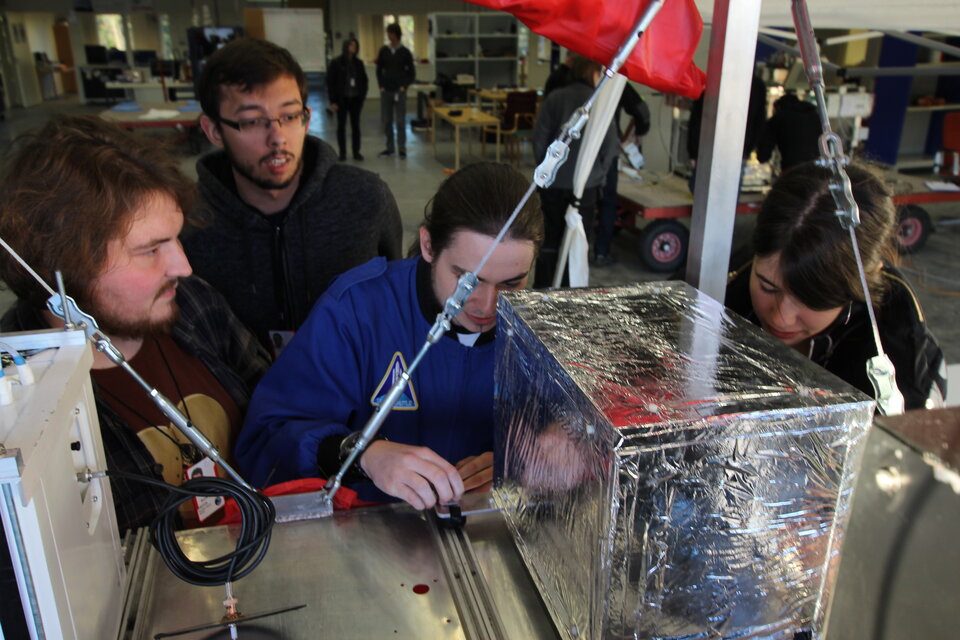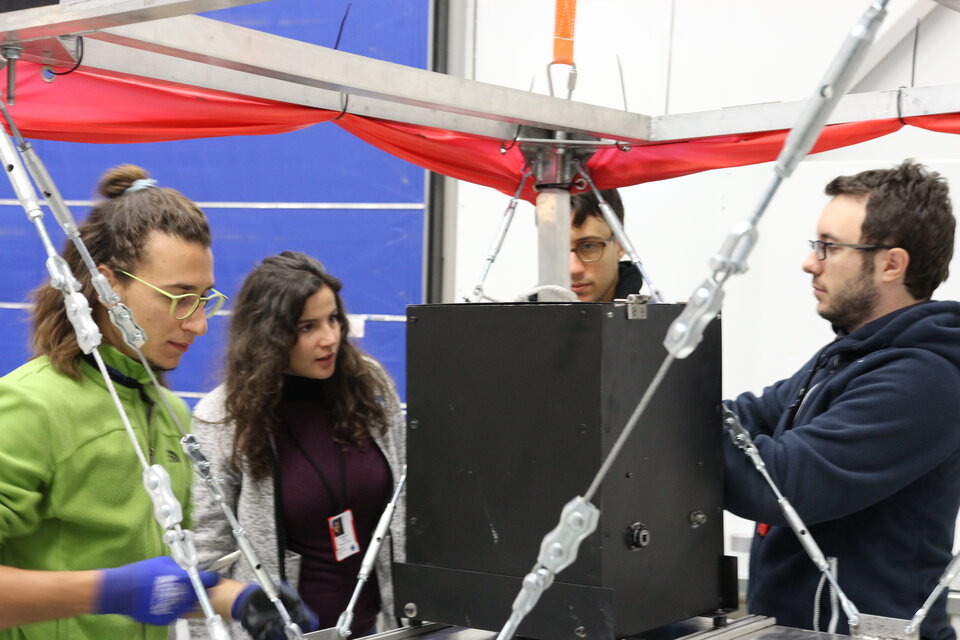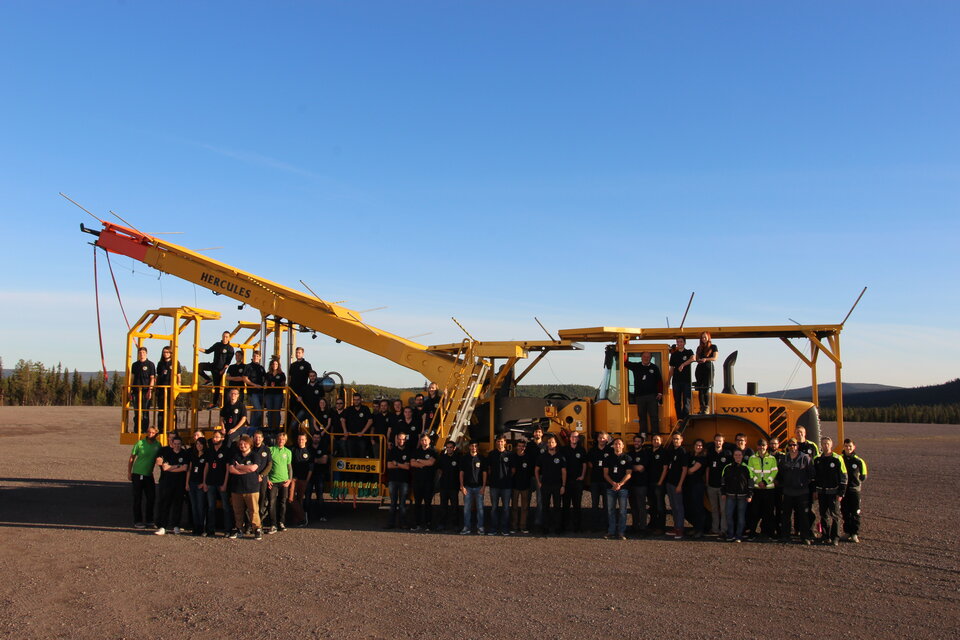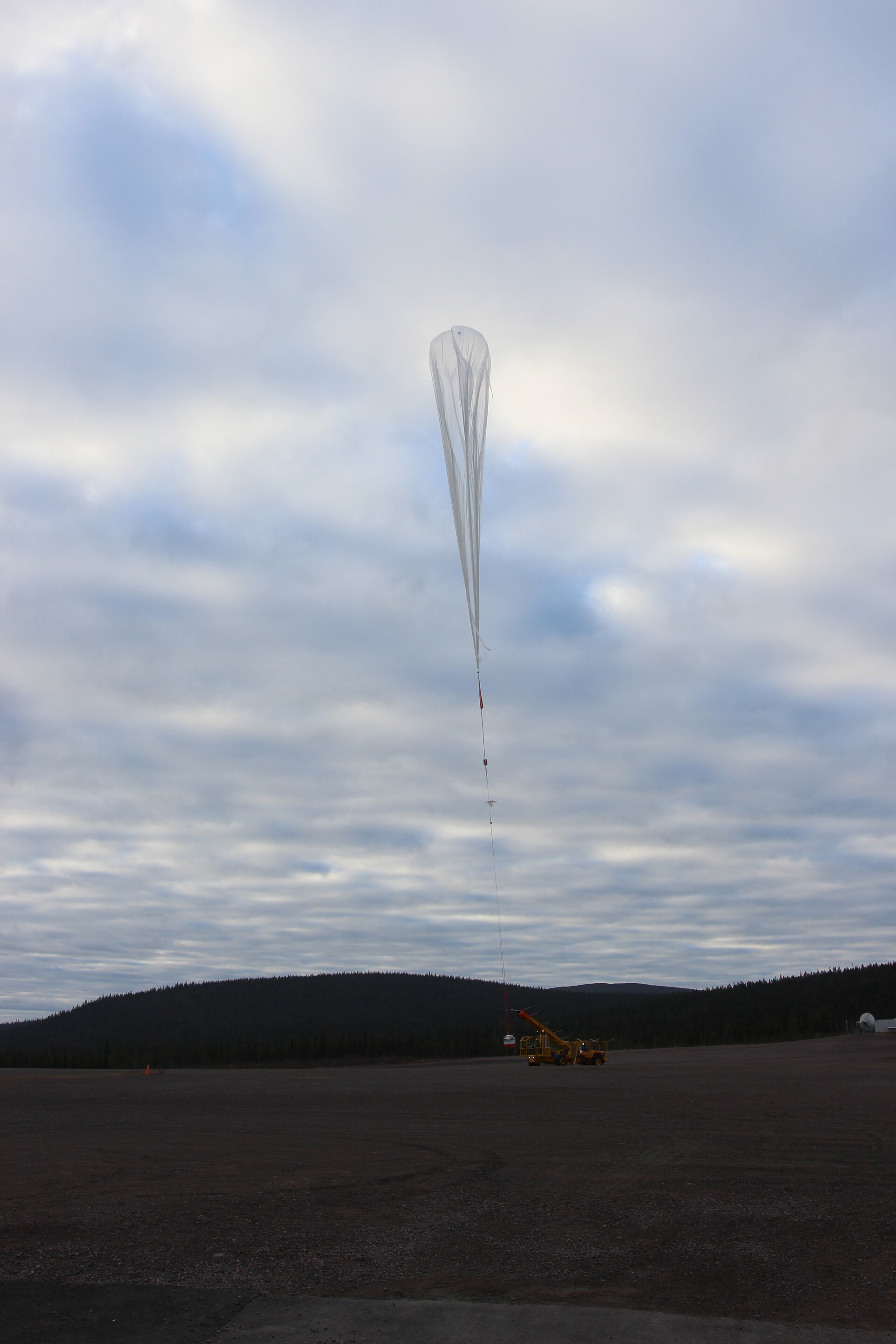BEXUS 22 and 23 successfully launched
Last week forty-five students participating in the Rocket and Balloon Experiments for University Students (REXUS/BEXUS) programme had the fantastic opportunity to see their experiments launched into space!
Every year, at the beginning of October, a group of university students travel to the Esrange Space Center located 200 kilometres north of the Arctic circle to launch experiments they have developed over the course of the preceding year to the edge of space. Experiments are carried onboard stratospheric balloons that can reach an altitude of more than 32,000 metres. This year the launch campaign took place between 30 September and 10 October.
The German-Swedish REXUS/BEXUS programme provides two sounding rocket and stratospheric balloon launches every year. This year, six student teams from ESA member states were selected by the Swedish National Space Board (SNSB) and ESA in December 2015, and were asked to develop their ideas into experimental apparatus to be flown on BEXUS.
On 30 September, the teams gathered at the Esrange Space Center outside Kiruna, Northern Sweden, to prepare their experiments for flight. They were joined by two additional teams from Germany, which were sponsored by the German Aerospace Center (DLR).
The hard work started immediately, with the teams arriving, unpacking, and finalising their experiments. Experiments were then integrated into the BEXUS gondolas and individual tests were performed. They were then tested for compatibility with each other and with the gondola’s service systems.

After the successful flight compatibility tests, everything was prepared for launch. The launches took place on 5 and 7 October. BEXUS 22 was the first balloon launched during the campaign. After a countdown of about 4 hours it was released at 15:33 local time. Following an ascent of a little over 2 hours, it reached a floating altitude of 32,356 metres, which is the highest altitude ever reached by a BEXUS balloon.
The ESA/SNSB teams on BEXUS 22 were BuLMA (Balloon micro Lifeform-and-Meteorite Assembler) from Warsaw University of Technology, Poland, and STRATONAV (STRATOspheric NAVigation experiment) from Sapienza, University of Rome, and Alma Mater Studiorum, University of Bologna (Italy).
BuLMA tested different methods used to collect small particles from the stratosphere. Back on the ground, these particles will be analysed to determine their origin, consistence, evolution, and possible effects on atmospheric activities and life on Earth.

STRATONAV’s main goal was to test the VHF Omnidirectional Range (VOR) navigation system and evaluate its accuracy above its specified Standard Service Volume. This could make it possible to determine a future operational range extension of VOR to stratospheric flights.
"When we applied to the BEXUS Educational programme, we did not expect to live such an experience. The project offers the possibility to specialise in the field you are interested in, to improve your expertise, and to acquire new skills by facing different and new challenges every day. The pleasure of looking at and literally touching what at the beginning was just an idea in your mind is immeasurable and so fulfilling,” said a member of the STRATONAV team.
The two German teams sponsored by DLR also flew their experiments on BEXUS 22. These teams were LOTUS-D (Light Optical Transmission-Experiment of University Students – Data) from Dresden University of Technology and TDP-3 Vanguard (Technology Demonstrator Platform 3 Vanguard) from the Technical University of Munich.

LOTUS-D established an optical communication link between a small ground station and the balloon. By means of a modulated LED, a predefined data sequence was sent to the balloon gondola.
TDP-3 Vanguards’ goal was to develop a compact and low-power telemetry and data handling platform for scientific experiments, and to measure the radiation composition near the Pfotzer maximum.
On 7 October, BEXUS 23 took to the skies for a day flight at 09:08 local time, reaching an altitude of 32,285 metres
The ESA/SNSB teams on BEXUS 23 were ACORDE (Altitude Cosmic Ray Detector) from University of the Basque Country (Spain), OSCAR (Optical Sensors Based On Carbon Materials) from Hasselt University (Belgium), PREDATOR (Pressure Difference dependency on Altitude verifcaTOR) from Czech Technical University in Prague, Czech Republic, and SIGNON (Signals of Opportunity for Navigation) from University of Porto (Portugal).
ACORDE used a cloud chamber as a low-cost and lightweight particle detector. Particles crossing the cloud chamber leave visible traces inside the cloud chamber that can be recorded with a set of cameras.

OSCAR investigated the performance of carbon-based solar cells and a prototype diamond magnetometer in an aerospace environment. The low mass of carbon-based solar cells results in a very high power-to-mass ratio, making these devices excellent candidates for aerospace applications.
PREDATOR used multiple pressure sensors in a fixed distance that were calibrated on ground in order to measure both relative and absolute altitude of the balloon. By knowing the exact pressure difference that can be obtained during the experiment on the balloon, the method can later be used on aircrafts to determine their exact altitude.
SIGNON exploited existing radio signals of opportunity in the vicinity of the balloon flight path for navigation purposes. Multiple services provide signals of opportunity such as FM radio, DTTV and ADSB. The SIGNON experiment was able to receive and process these signals in order to compute the position of the balloon.
“This programme has been an awesome and life changing experience. It has provided us not just with practical knowledge and soft skills, but also unforgettable memories for life,” said a member of the SIGNON team.
The two gondolas landed near Rovaniemi in Finland. BEXUS 22 spent one and a half days in the woods before being recovered, while BEXUS 23 was recovered hours after landing. It took another day to bring the gondolas back to Esrange. On the morning of 8 October, the teams got their experiments back and started downloading their onboard data.
The teams can now begin to process their stored data and draw their conclusions. The next phase of the programme requires that they submit a final version of their documentation containing the results of their experiment.
The REXUS/BEXUS programme will continue next year with a new selection process. The call for proposals is currently open, and closes on 17 October.
Notes for editors
The REXUS/BEXUS programme is realised under a bilateral Agency Agreement between the German Aerospace Center (DLR) and the Swedish National Space Board (SNSB). Through the collaboration with the European Space Agency (ESA), the Swedish share has been made available to students from all ESA Member and Cooperating States. EuroLaunch, the cooperation between the Esrange Space Center of SSC and the Mobile Rocket Base (MORABA) of DLR, is responsible for the campaign management and operation of the launch vehicles. Experts from DLR, SSC, ZARM, and ESA provide technical and logistic support to the student teams throughout the project.




